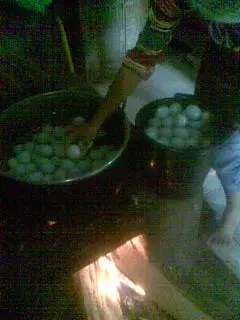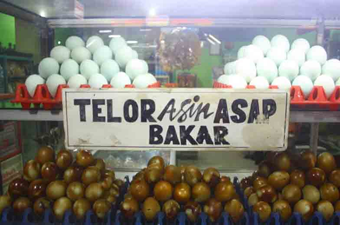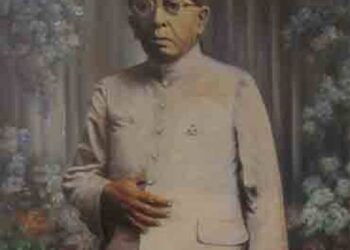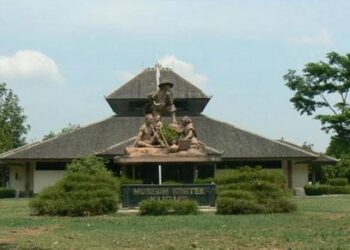Development of Salted Egg Industry in Brebes Regency
How to Make Salted Eggs in Brebes
Salted Egg Production Tools and Processes
1. Production Tools
The development of a business world and the development of civilization, the function of a production process is increasing, because without a production process it will not run properly in a company or factory. In running the production system can not be separated from the planning activities, so that the expected goal is achieved.
Preservation is part of the post-harvest handling effort with the aim to keep the quality of eggs good for a long period of time. Duck eggs can be preserved in a variety of ways and preservatives. Unpreserved duck eggs can only last for 14 days if stored at room temperature. More than that, the eggs will rot. This preservation is very helpful for farmers who have excess egg distribution and have difficulty in selling it (Martawijaya, 2004:89).
One of the widely known salting eggs is the way brebes are salted. As the name suggests, this salting is widely done by the Brebes community. So it’s no surprise that Brebes is known as a salted egg town. From this area, many quality salted egg products are produced with the characteristic of masir and oily yolks and the price is relatively cheap.
In general, the use of technology or equipment in brebes salted egg industry in salted egg processing is still simple without the use of machines still using human hands (Handmade). Much of the production output depends heavily on the amount of labor. That’s why it belongs to a labor-intensive industry. Equipment used include plastic buckets, dandang or pani, wooden crates, kerosene stoves or firewood and bamboo baskets, while the packaging of breast milk eggs uses besek and cardboard. Besek is a bamboo weaning box consisting of a container and lid.
The process of production of salted eggs requires duck eggs as raw materials and some other ingredients as auxiliary materials. The auxiliary materials are refined red bricks, salt, water, ash rub, chaff, rice straw, firewood and kerosene. Salted egg entrepreneurs prefer shepherd duck eggs because the color of the yolk orange or reddish yellow is preferred by consumers than the color of the yellow of the duck egg that is intensively farmed. However, the erratic availability of pangon duck eggs (eggs obtained from extensively farmed ducks) led to salty egg entrepreneurs being forced to use farm duck eggs. The price of large duck eggs ranges from Rp.450-Rp.520, while for small duck eggs Rp.420-Rp.500. Duck egg entrepreneurs generally buy duck eggs from baskets or large traders (84%), farmers directly (10%). The raw duck eggs purchased come from Brebes County itself and the outer areas of Brebes Regency. The eggs of ducks to be marinated should fill the landing as, still fresh, new, clean from dirt, the skin or shell is still intact and not cracked. There are several ways of salting eggs that are well known among duck farmers and salted egg entrepreneurs by using the basic ingredients of salt.
The process of production of salted eggs, in addition to requiring duck eggs as the main ingredient also requires several other ingredients as auxiliary materials such as red brick powder or ground ladon, salt, water, black ash, rice straw and kerosene. Comparison of sanitary pads, the type of sanitary pads used and the way of manufacture will affect the type of taste and appearance of salted eggs. The production process of salted egg making includes activities: sorting, cleaning / washing, dough making sanitary pads, sanitary pads, storage, sorting, maturation, sorting of cooked salted eggs. The sequence of salted egg making process is described below:
2. Brebes Salted Egg Production Process
First Process: Fertile raw duck eggs. The sorting of an intact duck egg with a crack is characterized by the difference in the sound of the collision of two eggs slowly. If the sound of “ting-ting” means the duck egg is intact and passes sorting while the sound of “tech” is a sign that the duck egg has been damaged. Sorted eggs are cleaned from impurities attached to the shell by washing them in warm water or clean water.

Third process: Wrap the eggs with the dough with a thickness of about 0.5 cm. Then sprinkled with dry black ash to reduce the moisture content on the dough.
The fourth process: eggs that have been wrapped, stored in wooden crates that are plinthed with rice straw and daily watered so that the humidity is always maintained. This storage process is the main process in the manufacture of salted eggs because it is this stage that the salting process occurs. Storage time affects the level of saltiness in salted eggs, the longer storage gets salty. Salty taste is being obtained with storage for 7-10 days. For a very salty taste is obtained with storage for 15-20 days. Most salted egg entrepreneurs in Brebes keep them for 15 days for salted and oily eggs.
The fifth process: eggs stored in wooden crates, some of which are sold in a raw state and some must be processed. Before processing these asim eggs are re-sorted to be separated from the absence of rotten or damaged eggs. Rotten or damaged eggs are rare at this stage if at the time of the first sorting stage is carried out carefully.
Sixth process: Before the salted eggs are fertile, first remove the cling sanitary pads, then wash them with the help of water to make them cleaner. The sanitary pads that have been released earlier, can be re-used as sanitary pads for 2-3 times the production process. The way is to dry the sanitary pads that were once used under the heat of the sun until dry and should not be exposed to water.
The seventh process: Eggs to be sold maturely must go through the maturation stage. Ripening time for 4-5 hours to obtain quality salted eggs. Cooked salted eggs are then sorted to separate from the cracked salted eggs. The cooked eggs are then sorted back to separate the cracked eggs. The average number of eggs cracked during the maturation process is 0.20% of all cooked salted eggs. Cracked eggs are usually consumed on their own.
Read also : Development Salted Eggs Brebes Part 1
3. Types of Salted Egg Production
The salted egg industry in Brebes is widespread enough to have a wide range of salted egg quality options, although people’s taste varies, salty eggs that are rated high quality have the characteristics of bright orange to reddish orange yolk parts, “dry” (if bitten does not secrete liquid), does not cause fishy smell and unstunging saltiness (Interview Emmry Yuniaty, May 2012).
Types of salted eggs in Brebes:
1. Poached Salted Eggs
2. Grilled Salted Eggs
3. Fried Salted Eggs
4. Owner of Salted Egg Industry Capital in Limbangan Wetan Village, Brebes Sub-District
Capital management is the main requirement in establishing a business or industry. A company will not be able to produce without the capital that is invested. In this case, small industrial entrepreneurs of salted eggs in Limbangan Wetan Village of Brebes sub-district are obtained from private capital, loan koprasi, banks, and cooperation with related parties.
The system of capital ownership in the salted egg industry is the individual capital system. In a sense, the capital is its own. At first glance, the salted egg industry is very simple and requires little capital. The capital is to buy raw materials, pay for labor, marketing, etc.Salted egg entrepreneurs usually borrow capital to Bank Rakyat Indonesia (BRI) organized by the village, so that if people will borrow money there is no need to go to BRI directly located in the sub-district. Borrow at the bank of course by meeting some of the applicable requirements. The requirement is that the borrower must submit a security letter of a large amount depending on the amount of capital to be borrowed. This security letter is used as collateral for the debts in the bank. These warrants can be land letters, house letters, etc. Loans available at business locations include Small Business Credit (KUK) from BRI Unit and Credit Guarantee Fund Program (KPDP) from Bank Bukopin. The kuk provided is working capital credit and or investment capital with the maximum ceiling can be decided by BRI Unit with a range of Rp 50 million, while KPDP which can be decided by the branch office with a ceiling between Rp 400 – 500 million.
In order to provide individual credit, the bank analyzes the character of prospective customers, management capabilities, financial capabilities including capital and operating profit, technical aspects, business conditions and prospects, and collateral. Interest rates for the KUK credit scheme provided by BRI for this business range from 21-24% per year with a credit term of one to two years, while the KPDP rate from Bank Bukopin is 13% per year with a three-year term. In capital procurement, salted egg entrepreneurs in Limbangan Wetan borrow money in banks or koprasi. As expressed by Titin Sumiarti, he says:
“In the capital loan at the bank, I use a monthly system with the loan amount reaching Rp. 25,000,000, every month I have to pay the debt in the bank and of course with the loan interest, but the loan money is not used entirely for the initial capital of the creation of salted eggs but rather to send the child and saved for the development of salted egg business later,” (Interview Titin Sumiarti, June 2012).”
In addition to banks and banks, entrepreneurs can also borrow capital to the wealthy. They are successful salted egg entrepreneurs. Those who borrow to these people are usually small entrepreneurs, the return time is also determined by both parties.
In Brebes sub-district, small salted egg entrepreneurs generally start their businesses using their own capital and there has been no attention from local governments in the form of business capital assistance. Business training and counseling have been conducted but are not routine and sustainable. Business skills are acquired by each entrepreneur self-taught from hereditary family habits.
To facilitate the analysis of salted egg industi capital in Brebes Sub-district, the author will classify into several types based on the capital namely small industi I which has a small capital, industi II that has medium capital, and industi III with large capital. The following will be explained about the development of capital in running the salted egg industry business in Brebes Sub-district.
Read also : Development Salted Eggs Brebes Part 1
Table 2.1
Classification of Salted Egg Industry by Amount of Capital
at Limbangan Wetan 1980-2005 years
| Business Classification | Owner Name | Year | Asset (Month) |
| Small Industry 1 (Small) |
1. Mulyani 2. Tarkwadi 3. Marwiyah |
1980 | – |
| 1990 | Rp. 750.000- 1.500.000 | ||
| 2005 | Rp. 5.000.000-8.000.000 | ||
| Small Industry 2 (Medium) |
1. Rosid 2. Titin Sumiarti 3. Wariah |
1980 | Rp. 500.000- 1.000.000 |
| 1990 | Rp. 1.500.000- 2.000.000 | ||
| 2005 | Rp. 8.000.000- 12.000.000 | ||
| Small Industry 3 (Large) |
1. Hartono S 2. Emmry Y 3. Komarudin |
1980 | Rp. 1.000.000-1.500.000 |
| 1990 | Rp. 2.000.000- 5.000.000 | ||
| 2005 | Rp. 18.000.000- 20.000.000 |
Next article here : Development Salted Eggs in Brebes Part 3
















